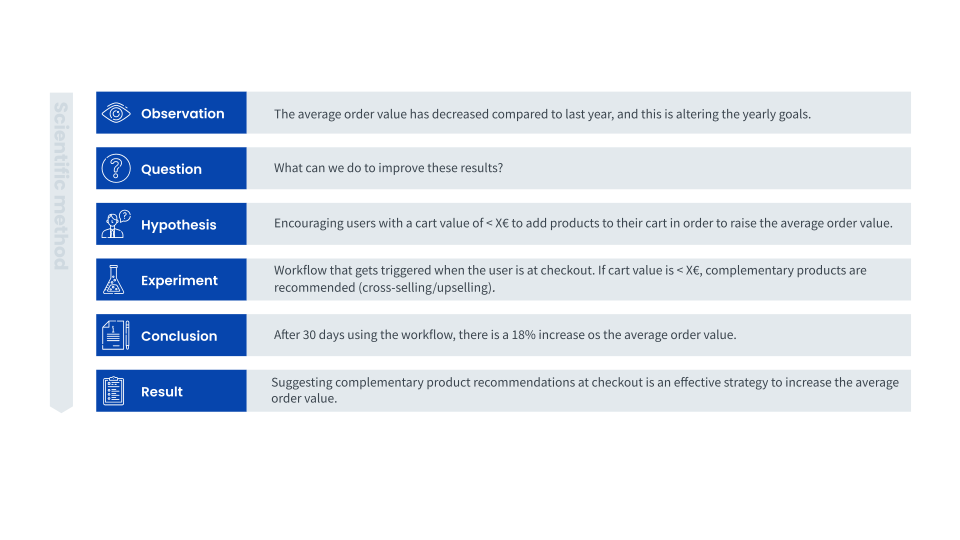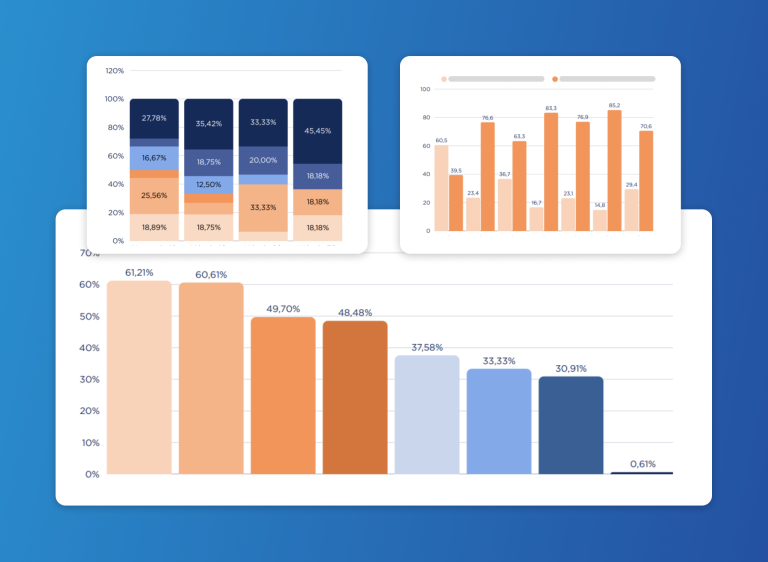Testing and iterating is essential for CMOs and their teams. Evolving is not feasible if there is no experimentation, measuring and strategy readjustments. And better results can be obtained when the scientific method is applied to this process, basing it off reliable data. In this post we will go over the steps of the scientific method and show you real success stories of eCommerce sites that have applied it to their strategies.
Traditional Marketing vs Scientific Marketing
We’re living in the age of Big Data. That’s why it makes more sense than ever to apply the scientific method when searching for new marketing opportunities. Data is so abundant nowadays that filtering and using it properly is the smartest choice you can make. That way, you’ll be able to make informed decisions that aren’t solely based on fallible intuition.
Scientific marketing has emerged as a more methodical, less random and more effective way of marketing products and services compared to traditional methods.
The main differences between traditional and scientific marketing are:
| Traditional Marketing | Scientific Marketing |
| Strategy is subjective. This can lead to wrong results. | Quantitative and qualitative factors are taken into account to create a strategy. |
| A general, disorganized research process is followed to create a strategy. | Strategy and outcomes are based on the scientific method. |
| Results are based on subjective remarks and can be biased. | Results are based on objective remarks and can be measured. |
The 6 steps of the Scientific Method
Applying the scientific method to your marketing strategy will bring in data-driven results. Any scientific-based strategy will result in more precise predictions about what works and will generate better insights to understand why it works.
Can’t recall your Science lessons from high school or college? Let’s review the 6 steps of the scientific method then:
- Observation: a quantitative and qualitative observation process allows us to identify the problem.
- Question: What can we do to solve the problem?
- Hypothesis: choose your theory (just one). Be aware that you won’t have to test everything at once.
- Experiment: then test and explore in a methodical and orderly manner.
- Conclusion: measure your results with precision and check if your hypothesis has been validated.
- Result: depending on the outcome, iterate and keep testing.
This means that you should go through your results and client/market behaviors first, and then ask a question. Next, it’ll be time to research the context and create a hypothesis. Experiment, collect results and analyze them to check the validity of your hypothesis. Draw a conclusion, and then iterate with new actions to develop your strategy. See an example of this process down below.
The key to success in marketing is taking what you learnt by analyzing your data and implementing that in your next campaigns.
Obviously, nuances are as important in experiments and iterations as the 6 steps of the scientific method. We’re showing you different use examples below so you can use them as a model for your eCommerce site and adapt them to your specific context.
Always keep this outline in mind:
SCIENTIFIC METHOD + MARKETING = DATA-DRIVEN RESULTS
How to get successful results
Provide your team with transparent data
Data is an incredibly powerful tool to make informed and effective decisions. Try to make it accessible for the whole team. Let everyone check and use data in order to develop ideas and give feedback.
Minimize observer bias
Fight the natural tendency of looking for specific information that confirms your biases and beliefs. Cherry picking and false causality are good examples of this. When we only collect data that supports our biases and ignore the rest, we are cherry picking. And when we imply that two or more events are connected because there’s a statistical correlation between them, we’re identifying a potential false cause and effect.
Save your dashboards and reports for future reference
Retrace your steps and check how your data has been affected by the changes you’ve implemented. Are you getting the impact you expected? Analyze your new data using the same criteria and find out!
Don’t try to measure and evaluate all at once
Before deciding what to measure and how, remember that you’ll have to take it step by step in order to draw valid conclusions. Measure what you can, make an evaluation and try not to do everything at once. Don’t bite off more than you can chew! Keep this in mind and work on one hypothesis at a time.
CASE 1
Validated hypothesis: finding the most profitable channel boosts conversions and user interaction.
Gioseppo, one of the benchmarks in the Spanish shoe market, managed to increase their conversions up to 65% using push notifications, proving that this channel is highly effective to interact with clients. Find out how they did it here.
CASE 2
Validated hypothesis: personalizing your campaigns rapidly improves conversion rates.
Pienso y Mascotas, a leading company in the Spanish pet care market, increased their campaign conversions by +270% through user segmentation and personalized email offers and discounts. Check out their success story here.
CASE 3
Validated hypothesis: delivering automated offers and discounts increases the chances of conversion.
Caja de Cartón is one of the most popular eCommerce packaging sites in Spain. By automating their email schedule for offers and discounts using strategic sales criteria, they managed to increase their abandoned cart retrieval rate by 13%. Want to find out how they did it? Download their strategy here.
Final Thoughts
It’s been proven that applying the scientific method to a marketing strategy makes it more effective and boosts results. If you’re interested in implementing changes and optimizing your marketing actions, this is certainly the smartest choice.
A scientific approach will allow you to cater to your clients’ needs and to create a unique, memorable, personalized purchasing experience.
Harness the power of data with Connectif to test, iterate and take your strategy to the next level. Explore and optimize your marketing actions using data-driven techniques in order to boost sales, create client loyalty and improve brand engagement.





